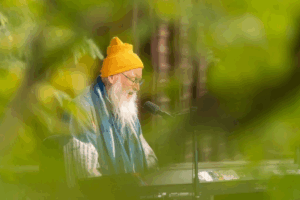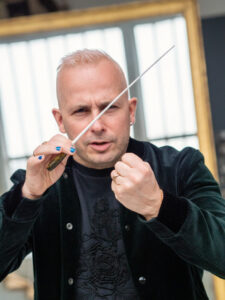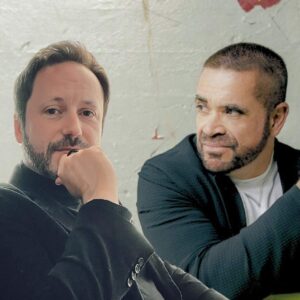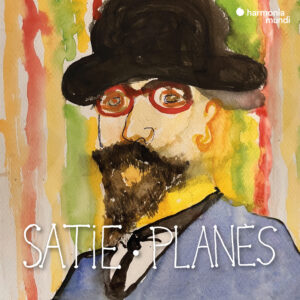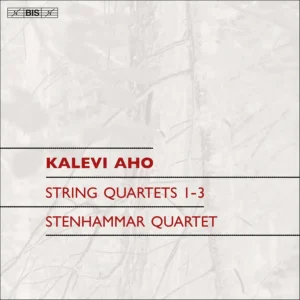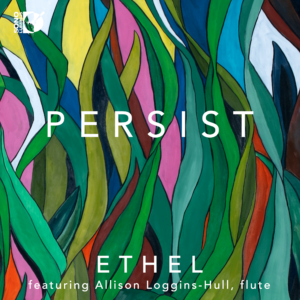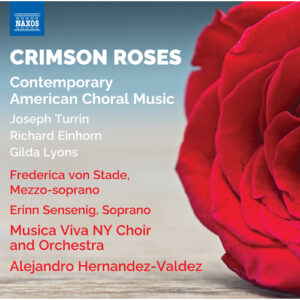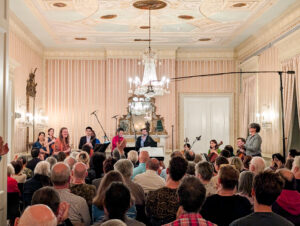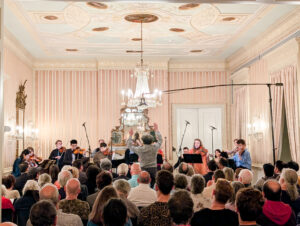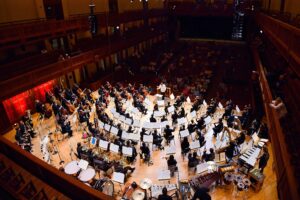
Photo: Hilary Scott (courtesy of BSO).
2025 Tanglewood Festival of Contemporary Music
Tanglewood Music Center Orchestra
July 28, 2025
LENOX – This year’s Festival of Contemporary Music was curated by composer Gabriela Ortiz. Born in Mexico City, Ortiz is one of the most prominent Latinx figures in twenty-first century classical music. Among other honors, she is composer-in-residence at Carnegie Hall and the Curtis Institute. Revolucióndiamantina, a recording of her music by the Los Angeles Philharmonic, conducted by Gustavo Dudamel, won three GRAMMY Awards in 2025. This year, FCM has spotlighted music from Mexico, as well as that of women composers. After four chamber ensemble programs, including one consisting entirely of music for percussion, the festival concluded with a concert performed by the Tanglewood Music Center Orchestra, conducted by Thomas Wilkins and two fellows, Yiran Zhao and Leonard Weiss (Zhao is a former student of mine, so I will limit my remarks to saying that her teacher was proud). TMC is a student orchestra, but their talent and hard work abetted a high level of playing throughout. All of the concert’s music was written in the twenty-first century by living composers.
Bioluminescence Chaconne (2019), by Gabriella Smith (b. 1991), is built around overlapping ostinatos. String tremolandos are prominent in the beginning, and glissandos take on an increasingly important role. The piece has a gradual buildup to a powerful central section with brash tutti and stretches of syncopated percussion, followed by a return to its opening demeanor to conclude. Smith is a violinist, and it shows in the deft deployment of strings here. She has cited Bach’s D minor Chaconne as a touchstone, but its form repeats in a more symmetrical fashion than the shape of Bioluminescence Chaconne. The first word of the title may be more telling, as Smith has suggested that her experiences scuba diving, accompanying a team of researchers, was an inspiration for the piece. The piece works well, so well that next year the Boston Symphony Orchestra is playing it too.
Ellen Reid (b. 1983) won the Pulitzer Prize in 2019, and her piece When the World as You’ve Known It Doesn’t Exist (2019) was commissioned and premiered by the New York Philharmonic. In addition to a large orchestra, it features three sopranos in wide ranging wordless parts encompassing animated and sustained passages. Zoe McCormick, Kerrigan Bigelow, and Sarah Davis sang skilfully, blending well together and with the orchestra. Like Smith, Reid uses ostinatos, and these are contrasted with aching pitch slides and clusters. When the World… is likely her most dissonant piece, with both major and minor seconds featuring prominently in the motivic and harmonic material. Weiss brought out dynamic contrasts and imbued the legato sections with a strong sense of line.
Reid wrote When the World… for the NY Phil’s Project 19, which celebrated a centenary of women’s suffrage in the United States. Her program note suggests that it doesn’t directly reflect this issue, and is instead focused on an emotional artistic journey, delineated in stages not dissimilar to those frequently found in grieving, moving from questioning to anger to acceptance.
Ortiz had two pieces on the program, one concluding the first half and the other played after intermission. Guest flutist Alejandro Escuer was the soloist on Altar de Viento (“Altar of the Wind,” 2015), a concerto specifically written for him. Escuer’s proficiency with extended techniques is comprehensive, and Ortiz makes good use of them in the piece. Escuer’s approach is also attuned to rhythm, and he even moves a bit during interludes where he isn’t playing, underlining the dance rhythms so often present in Altar de Viento. Indeed, the percussion section once again got a workout, playing traditional dances and new music gestures with equal aplomb. The rest of the orchestra was game to groove as well, and Wilkins led them through myriad metric shifts with suavity and clarity.
Hominum, Concerto for Orchestra (2017), is an imposing half-hour long piece. One of Ortiz’s finest, it was premiered in 2017 by another exemplary student ensemble, the Juilliard Orchestra. There’s nothing about the concerto that suggests it was sculpted with emerging artists in mind, as it is quite challenging. Composers who write a concerto for orchestra usually provide each cohort of the ensemble with music that spotlights their capacities and instruments’ essential characteristics. Ortiz revels in exploring the many textures that an orchestra can achieve in the twenty-first century. The virtuosity that talented musicians possess is explored as well. Hominum is at turns vivacious, brash, reflective, and powerful, and served as a rousing closer for FCM.
-Christian Carey

